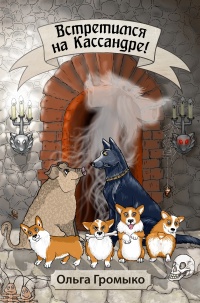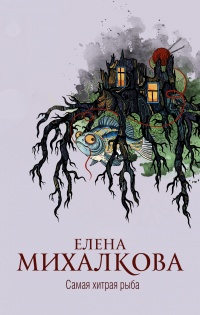Книга Воспитание дикости. Как животные создают свою культуру, растят потомство, учат и учатся - Карл Сафина
Шрифт:
Интервал:
Закладка:
256
Следует добавить, что «альфами» становятся прежде всего в результате интриг, подкупа, создания коалиций, а насилие и угрозы – одно из средств достижения цели. – Прим. науч. ред.
257
Повышение уровня окситоцина у коалиции самцов шимпанзе – верный признак того, что они идут кого-то бить. – Прим. науч. ред.
258
Шимпанзе не стали злее, просто повысилось качество исследований – шимпанзе привыкли к наблюдателю, наблюдатель научился оказываться в гуще событий. – Прим. науч. ред.
259
Однако у косаток были отмечены случаи инфантицида, а доминирующий слон-самец в период гона может покалечить слоненка. – Прим. науч. ред.
260
Rilling, J. K., et al. 2011. «Differences Between Chimpanzees and Bonobos in Neural Systems Supporting Social Cognition.» Social Cognitive and Affective Neuroscience 7: 369–79.
261
de Waal, Mama's Last Hug, p. 194.
262
Tan, J., et al. 2017. «Bonobos Respond Prosocially Toward Members of Other Groups.» Scientific Reports 7: 14733.
263
Wrangham, R., and D. Peterson. 1996. Demonic Males (New York: Mariner Books).
264
Parker, I. 2007. «Swingers.» New Yorker. July. Online.
265
Одна из возможных причин – ограничение пищевых ресурсов в местообитаниях обыкновенных шимпанзе. – Прим. науч. ред.
266
Это утверждение верно не только в отношении приматов; скажем, у дельфинов афалин характер взаимоотношений между особями в сообществе похож на «шимпанзиный». – Прим. науч. ред.
267
Lindegaard, M. R., et al. 2017. "Consolation in the Aftermath of Robberies Resembles Post-Aggression Consolation in Chimpanzees. PLOS One 12: e0177725.
268
Stanford, New Chimpanzee, p. 119.
269
Reynolds, Chimpanzees of the Budongo Forest, p. 124.
270
Stanford, New Chimpanzee, p. 152.
271
European perceptions and portrayals of chimpanzees: present: Anon. 2005. «A Brief History of Chimps.» Nature 437: 48–49. См. также: Boesch, Real Chimpanzee, pp. 111, 130.
272
Savage, T. S., and J. Wyman. 1844. "Observations on the External Characters and Habits of the Troglodytes niger." Boston Journal of Natural History 4: 362–86. Online.
273
Darwin, Descent of Man, p. 51.
274
Goodall, J. 1990. Through a Window: My Thirty Years with the Chimpanzees of Gombe. Boston: Houghton Mifflin.
275
Смотри: See: Safina, C. 2015. Beyond Words (New York: Henry Holt), pp. 195–98 and 349. Перевод: Сафина К. За гранью слов. О чем думают и что чувствуют животные. – М.: КоЛибри, 2018.
276
Stanford, New Chimpanzee, pp. 162–63. См. также: Boesch, Real Chimpanzee, p. 117.
277
Запись от руки в журнале Исследовательской станции Будонго (Budongo Conservation Field Station).
278
Max Planck Institute for Evolutionary Anthropology. «New Chimpanzee Culture Discovered: Study Describes Unique Behavioral Patterns of Bili-Uéré Chimpanzees in the DR Congo.» ScienceDaily, February 25, 2019.
279
Whiten, A. 2005. «The Second Inheritance System of Chimpanzees and Humans.» Nature 437: 52–55.
280
Pascual-Garrido, A. 2019. «Cultural Variation Between Neighbouring Communities of Chimpanzees at Gombe, Tanzania.» Scientific Reports 9: article 8260. Online.
281
Stanford, New Chimpanzee, pp. 159–60.
282
McGrew, Cultured Chimpanzee, p. 5.
283
Stanford, New Chimpanzee, p. 159. См. также: Matsuzawa, T. 1991. «Nesting Cups and Metatools in Chimpanzees.» Behavioral and Brain Sciences 14: 570–71.
284
Stanford, New Chimpanzee, p. 160.
285
Biro, D., et al. 2003. «Cultural Innovation and Transmission of Tool Use in Wild Chimpanzees: Evidence from Field Experiments.» Animal Cognition 6: 213.
286
Stanford, New Chimpanzee, pp. 118–19, 164.
287
Whiten, «The Second Inheritance System of Chimpanzees and Humans,» 52–55. См. также: Hobaiter, C., et al. 2014. «Social Network Analysis Shows Direct Evidence for Social Transmission of Tool Use in Wild Chimpanzees.» PLOS Biology 12, no. 9: e1001960.
288
University of Vienna. 2018. «Re-inventing the Hook: Orangutans Spontaneously Bend Straight Wires into Hooks to Fish for Food»; https://m.phys.org/news/2018-11-re-inventing-orangutans-spontaneously-straight-wires.html. См. также: van Schaik, C. P., et al. 2003. «Orangutan Cultures and the Evolution of Material Culture.» Science 299: 102–5.
289
Laland, K. N. 2011. «From Fish to Fashion: Experimental and Theoretical Insights into the Evolution of Culture.» Philosophical Transactions of the Royal Society B. Online.
290
Krief, S., et al. 2014. «Wild Chimpanzees on the Edge: Nocturnal Activities in Croplands.» PLOS One 9: e109925.
291
Biro et al, «Cultural Innovation and Transmission of Tool Use in Wild Chimpanzees,» 213.
292
Whiten, A. 2017. «A Second Inheritance System: The Extension of Biology Through Culture.» Interface Focus. Online.
293
Yarber, Y., et al. 1980. Henry Beatus, Sr. (North Vancouver, BC: Hancock House).
294
Mandelbaum, R. F. 2019. «A Mallard Duckling Is Thriving – and Maybe Diving – Under the Care of Loon Parents.» Audubon, July 12.
295
Heyes, C. 2012. «What's Social About Social Learning?» Journal of Comparative Psychology 126: 193–202.
296
Whiten, A., and C. P. van Schaik. 2007. «The Evolution of Animal 'Cultures' and Social Intelligence.» Philosophical Transactions of the Royal Society B 362: 603–20.
297
Whiten, «A Second Inheritance

























